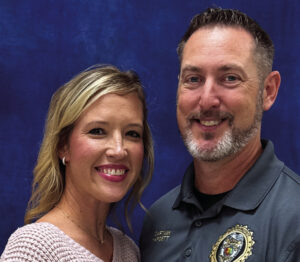GRADUATION PATHWAYS
Workforce option available in fall
RUSSELLVILLE Some high school students may soon opt out of two years’ worth of math and science courses.
To do so they must choose Alabama’s new high school diploma course — the Workforce Pathways Diploma.
The course will be available beginning this fall. Eighth through 11th graders now selecting their academic schedules for the 2025-26 school year are becoming familiar with the two options available.
Established by state lawmakers in 2024, the Workforce Pathways Diploma allows students to pursue a career-tech focused path instead of the traditional collegeready one. The goal is to offer a skills-focused curriculum the readies students to enter the workforce after high school graduation. The specialized education will focus on fields like health science, welding, and HVAC maintenance.
The main difference between the two pathways, which have been dubbed Option A (traditional) and Option B (workforce), is the number of math and science credits required for graduation.
For the traditional diploma, Alabama students are required to take four math and four science credits, or classes.
The workforce diploma, on the other hand, only requires two math courses and two science courses.
Additionally, students who elect the workforce diploma will be required to earn three credits in an approved course of career and technical education.
Callie Rasberry, Lauderdale County Schools’ director of Secondary Education, emphasized the new path is not a different or lesser diploma.
“There’s still one diploma — the Alabama High School Diploma — just two pathways to get there,” she explained.
“They can’t just take three random careertech classes,” said Colbert County Schools’ Superintendent Nathan Fuller. “All three have to be within the same course of study, which is why it goes by the ‘pathway’ name.”
For Fuller, the option is a positive change. He noted that when students have the opportunity to choose their studies, they tend to take greater interest in the outcome.
“They see it as more relevant to them, so they work a little harder and tend to be more successful,” he said.
Russellville City Schools’ Superintendent Tim Guinn said the new workforce option could reduce high school dropout rates while strengthening Alabama’s labor force.
However, it is imperative that students — and parents — understand the potential implications of selecting the workforce option, he said.
The biggest downside is students getting a Workforce Pathways Diploma may no longer meet four-year college admissions requirements. For example, while the University of North Alabama only requires two math and two science credits for admission, the University of Alabama requires three of each.
Additionally, student athletes hoping to play at the next level will need to closely monitor academic requirements.
The Workforce Pathways Diploma requires 6.5 elective credits compared to the traditional diploma’s 2.5 electives.
Since students can take any course as an elective, it could be possible for a student to be on the workforce path while still earning all four math and science credits. Therefore, it’s important for students to pay attention to their elective choices if they want to make sure they are meeting admission requirements for their four-year university of choice.
While students completing their eighth-grade years will be presented with the workforce option, because the new pathway requires only two years of math and science, their academics will not be impacted until the end of 10th grade.
For Franklin County Schools, students entering high school will automatically be placed on the traditional diploma pathway.
At the end of their 10thgrade year, those students can decide which diploma pathway they wish to pursue.









